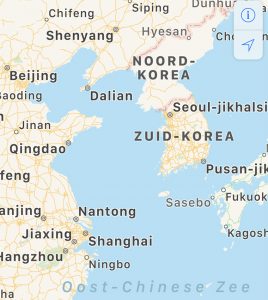We interviewed Andrei Kouznetsov, our purchasing director and expert regarding the fish & seafood supply chain on the remarkable trends in whitefish supply.
Reporter: Since the beginning of this year, we’ve noticed considerable increases in price and limitations in the supply of various whitefish species. What is going on in whitefish supply these days?

A.K.: We are indeed confronted with very strong price increases of the raw materials this year. It would take too long to review all species in detail, since whitefish is a large group of species, which we can subdivide into different origins: Northeast Atlantic, Pacific, wild versus farmed species…. But what is common for all species is that prices are determined by the worldwide market of supply and demand. On top of that, like in a system of communicating vessels, a price increase of one species will induce a shift in demand for another (cheaper) species.
We had indeed expected some pressure in 2018, because two very important species – Alaska pollock and cod, the two wild-caught species with by far the largest catch volumes – were both confronted with reductions of the quota. And this while demand has been rising since many years because of worldwide population growth and the rise of young dynamic economies, the so-called BRIC countries (Brazil, Russia, India and China). These countries play an ever increasing role in the ‘battle’ for the available volumes. A development which we had not seen coming is the sudden demand for whole pangasius from China, which is now taking an important part of the available volumes against conditions which are attractive for the farmers.
Reporter: So for Alaska pollock and cod we should in any case expect price increases?

A.K.: Indeed, the price development of cod can even be called explosive. On the one hand we can certainly say the market is overheated, but on the other hand we have not yet reached historically high price records. The current price levels are not uncommon and there certainly is room for further price increases. For Alaska pollock the situation is similar, but in that case the exchange rate risk is playing an important part. A strong or weak dollar can either completely neutralize a raw material price increase, or reinforce it enormously. This year, we have not been helped by a weak dollar.
Reporter: In this situation, what are we doing to control these effects and price increases?
A.K.: In such turbulent times, information and long-term vision are essential. Thanks to our network of long-term relationships and high-quality partners we have access to early knowledge about market developments and can take these into account as well as possible, together with our producers and suppliers. Our procurement strategy is completely founded on a long-term approach with reliable and high-quality partners which can guarantee the necessary supply to us and which allow us to work our way around fluctuations in the market to the best of our ability. In the longer run we can of course not escape these upward trends and market price levels, but a good supply management in relation to availability allows us to prevent surprises.
Reporter: What are your expectations for 2019 and beyond?
A.K.: You ask me to consult my crystal ball? We know that supply will not increase: the wild-catch quota will not increase and farming cannot grow fast enough to fulfil the strong increase in demand. Fish and seafood are very healthy food sources and this translates into a strong demand!

For the rest, it’s like reading the tea leaves: at which price level will demand for cod start to go down? Will consumers refrain from buying it? Will producers of derived product switch to alternative raw materials? What will be the further demand development of China and other new markets? What will be the situation of the various farmed fish species? There are the global warming and climate change phenomena which may undermine so many traditional securities. Year after year there are completely disrupted catches or absences of fish stocks, or we are confronted with growth slowing down or other farming issues. Also, anyone will agree that predicting the evolution of the dollar has become completely impossible, not to mention macro-economic issues like the risk of trade wars.
With all this in mind, it is absolutely impossible to get and to give prices which are fixed for several years.
 Our purchasers regularly visit our most important raw material suppliers. A lot of our fish is filleted in China: Around the coastal towns Dalian and Qingdao there are many fish processing companies.
Our purchasers regularly visit our most important raw material suppliers. A lot of our fish is filleted in China: Around the coastal towns Dalian and Qingdao there are many fish processing companies.